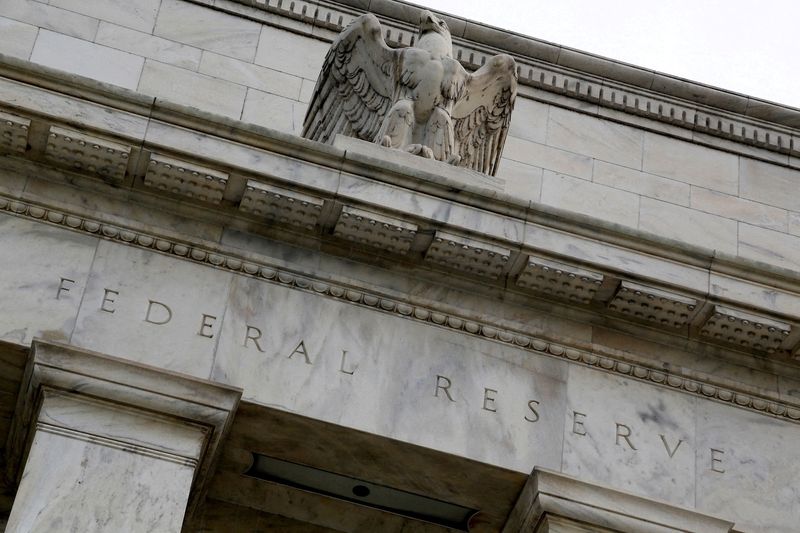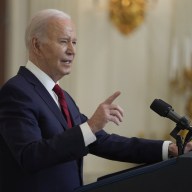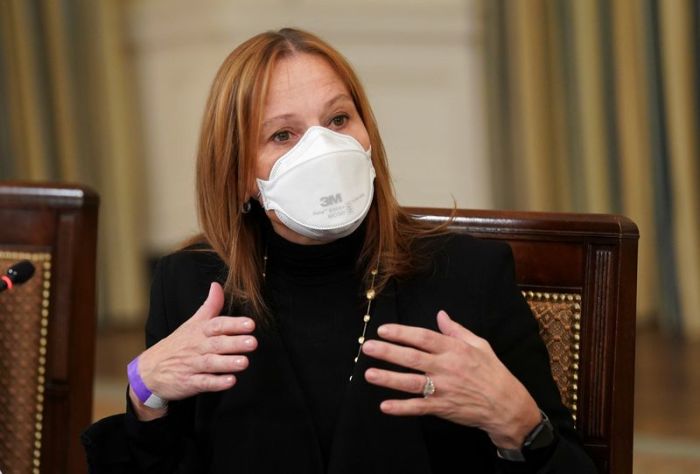(Reuters) -Federal Reserve officials in March “generally agreed” to cut up to $95 billion a month from the central bank’s asset holdings as another tool in the fight against surging inflation, even as the war in Ukraine tempered the first U.S. interest rate increase.
Minutes of the Fed’s March 15-16 meeting showed deepening concern among policymakers that inflation had broadened through the economy, which convinced them to not only raise the target policy rate by a quarter of a percentage point from its near-zero level but also to “expeditiously” push it to a “neutral posture,” estimated to be around 2.4%.
“Many” Fed officials said they were prepared to raise rates in half-percentage-point increments in coming policy meetings to try to bring prices under control, even though the rising risks tied to the Ukraine war held them to the standard hike in March, according to the minutes, which were released on Wednesday.
But they also moved forward with plans to pull out of key financial markets that have been benefiting from massive Fed support since March of 2020, when the coronavirus pandemic prompted the central bank to buy trillions of dollars in Treasury bonds and mortgage-backed securities (MBS).
After months of debate, policymakers rallied around a plan to as soon as next month reduce the Fed’s holdings of Treasury bonds by up to $60 billion per month and its MBS holdings by up to $35 billion per month, with the amounts phased in over three months or slightly longer, the minutes said.
The pace of the planned balance-sheet rundown, which should have the effect of increasing long-term interest rates, is nearly double that of the Fed’s “quantitative tightening” from 2017 to 2019, and could also include outright sales of MBS down the road, said the minutes.
“All participants agreed that elevated inflation and tight labor market conditions warranted commencement of balance sheet runoff.”
SWOLLEN BALANCE SHEET
The details of the balance sheet program included in the minutes are in line with analysts’ expectations, and pave the way for it to be set in motion after the Fed’s May 3-4 policy meeting.
The Fed unveiled its bond-buying program in the spring of 2020, swelling its holdings of Treasuries and MBS from $3.8 trillion to $8.5 trillion.
Yields on U.S. Treasury securities ticked higher after the release of the minutes, with the 10-year note yield climbing to 2.6%, while the dollar rose to its highest level since late May against a basket of currencies. Major U.S. stock indexes closed the session sharply lower.
“I don’t think there’s anything material that would garner a change in sentiment, as opposed to yesterday where there was a real change and I think it really spooked investors,” said Alan Lancz, president of Alan B. Lancz and Associates in Toledo, Ohio, referring to comments made by Fed Governor Lael Brainard on Tuesday.
Brainard told a Minneapolis Fed conference that she expected a combination of interest rate increases and a rapid balance sheet runoff to bring U.S. monetary policy to a “more neutral position” later this year, with further tightening to follow as needed.
(Reporting by Howard SchneiderEditing by Paul Simao)



















